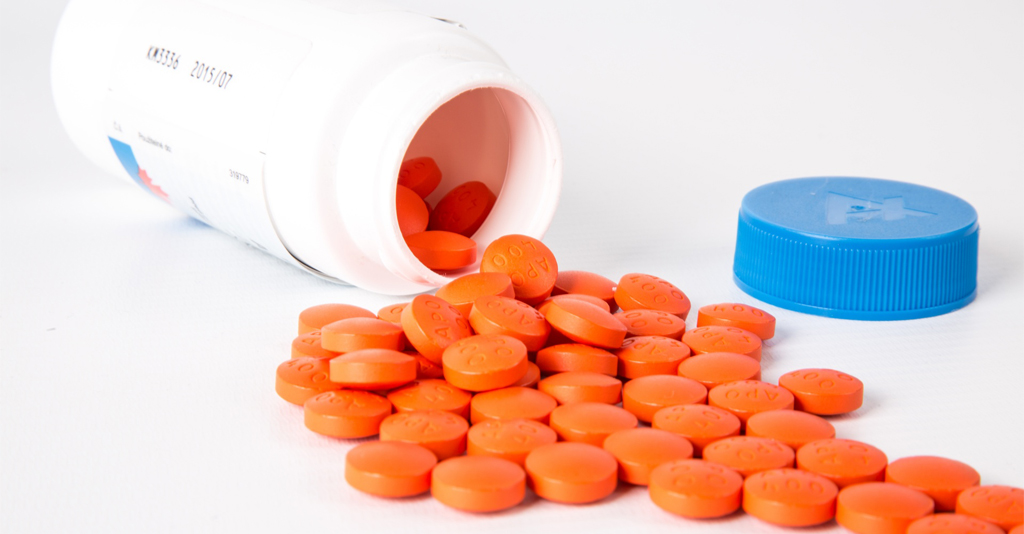GERD Statistics
Some people may, unfortunately, experience heartburns. Heartburn is a painful burning feeling in the chest or throat when stomach acid flows back into the esophagus, which is the tube that carries food from the mouth to the stomach. Heartburns can last from a few minutes to several hours and may feel worse after eating. Most people can bear the discomfort of occasional heartburns. However, they may interfere with everyday life if they occur too often. If heartburns occur more than twice a week, then this maybe a symptom of gastroesophageal reflux disease (GERD). There is a ring of muscles between the esophagus and the stomach called the lower esophageal sphincter (LES). Normally, the LES relaxes to allow food and drinks to flow into the stomach, and then it closes again. In GERD, the LES relaxes abnormally or weakens, so the stomach acid flows back and irritates the esophagus. This leads to inflammation. In most cases, people can work around GERD through diet and lifestyle changes. However, some people may require medication or even surgery.
The Most Surprising GERD Statistics
● Between 20 to 30% of adults in Western countries have GERD
● GERD incidence increases with age, particularly after 40 years of age
● Obesity also appears to increase the risk of GERD
● About a third of adults with GERD can develop esophageal mucosa damage (reflux
esophagitis)
● There is no significant difference in prevalence among males and females, but males
seem to have a higher rate of complications
● Males are twice as likely to have esophagitis
● Success with antireflux medications can range from 56 to 100%
● If surgery is needed, acid reflux surgery has a 95% success rate.
General Stats and Facts about GERD
1. GERD is also prevalent in other parts of the world.
Global GERD statistics shows that the prevalence of GERD ranges from 18.1% to 27.8% in North America, 8.8% to 25.9% in Europe, 2.5% to 7.8% in East Asia, 8.7% to 33.1% in the Middle East, 11.6% in Australia, and 23.0% in South America.
(National Center for Biotechnology Information)
2. GERD has other symptoms.
GERD can also manifest as water brash, chest pain or discomfort, dysphagia, belching, epigastric pain, nausea, and bloating. Moreover, patients may experience extraesophageal symptoms like coughs, hoarseness, throat clearing, throat pain or burning, wheezing, and sleep disturbances.
(WebMD)
3. About 50% of obese people have acid reflux or GERD.
Obesity is defined as a body mass index of more than 30. Researchers in the US found GERD to be occur less in people whose BMI was less than 30.
(National Center for Biotechnology Information)
4. More than 50% of women can experience GERD symptoms at some point during pregnancy.
The prevalence of GERD symptoms in pregnant women can increase from the first trimester with 26.1 to 36.1% in the second trimester and to 51.2% in the third trimester of pregnancy.
(BMC Gastroenterology)
5. Some foods can aggravate GERD or general acid reflux.
Which foods directly contribute to GERD or acid reflux is still under research. There are, however, some foods that have been observed to trigger acid reflux or GERD on many patients. These foods are now known to make the LES relax and thus allow stomach acid to flow into the esophagus. These foods include fried and fatty foods; spices like black pepper, garlic, and raw onions; citrus fruits, alcohol, and caffeinated drinks like coffee, tea, and soda.
(WebMD)
6. GERD can have complications.
If untreated, chronic GERD can lead to more serious complications since the acid that backflows can damage the esophagus, throat, and more.
GERD Statistics by Country (Prevalence by Continent)
North America: 18.1 to 27.8%
South America: 23.0%
Europe: 8.8 to 25.9%
Asia
- East Asia: 5.2 to 8.5%
- West Asia: 5.2 to 20%
- East Central: 8.7 to 33.1%
- South Central Asia: 6.8 to 39.7%
- Southeast Asia: 6.9 to 38.8%
Australia: 11.6%
Africa
- Sub-Saharan Africa: at least 61%
NOTE: There are limited studies on GERD on African countries. Some believe that GERD is uncommon in Africa.
The increase in GERD prevalence may be because of factors such as older age, male sex, race, analgesics intake, consumption of certain types of food and drinks, lower Helicobacter pylori infections, smoking, family history of GERD, high body mass index (BMI), and limited physical activity.
Canada
- At least 170,000 adults and 56,000 children will be newly diagnosed with GERD every year.
- In 2017, public drug programs spent $198.2 million for proton pump inhibitors, ranking the drug 7th when it comes to public drug program costs.
- Patients with GERD lose 16% of their work time due to their symptoms.
Mexico
- Between 19.6 to 40% in Mexico experience heartburn or regurgitation once a week.
Brazil
- GERD is present in 7.3%
- Heartburn is present in 11.9%
- Of those who suffer from heartburn, 4.6% experience it once a week
UK
- Heartburn affects 25% of adults in the UK.
- The UK spends 1.69% of its GDP for GERD research.
- The UK had the 11th-highest GERD as a percentage of GDP out of 28 EU countries.
Nigeria
- About 7.6% of Nigerian adults suffer from GERD.
- Of those with GERD, 3.0% have a lower quality of life.
Abidjan (City in Côte d’Ivoire)
- Heartburn occurs in 22.32% of Abidjan citizens.
- Of those who suffer from heartburn, 9.2% get it once a week.
Selected Asian Countries
- China: 17.3%
- Japan: 6.6 to 9.8%
- Singapore: 10.5%
- Iran: 6.3 to 18.2%
GERD Complications
7. According to some GERD statistics, more than 150,000 can have esophagitis and possibly cancer.
Esophagitis is inflammation in the esophagus. In the US 152,152 cases of esophagitis were reported between 2009 and 2011. Prevalence peaked in men 35-39 years old
(ScienceDirect)
8. About 10 to 15% of people with GERD symptoms can increase their chances of esophageal cancer.
Chronic esophagitis can further lead to Barrett’s esophagus, wherein normal cells of the esophagus are replaced with cells similar to those of the intestine. This condition is precancerous. However, it does not necessarily mean people with Barrett’s esophagus will get cancer, but their chances of getting cancer increase.
(University of Michigan)
9. Between 2 to 7% of GERD lead to Esophageal ulcers.
GERD is the top cause of ulcers or sores in the lining of the esophagus. Symptoms include painful swallowing, nausea, and chest pain.
(National Center for Biotechnology Information)
10. Esophageal stricture occur in 1.1 per 10,000 persons.
Esophageal stricture happens when the esophagus becomes too narrow and hinders swallowing. Benign (non-cancerous) strictures may occur due to buildup of fibrous tissue and collagen deposits due to chronic inflammation of the esophagus.
(National Center for Biotechnology Information)
11. GERD statistics shows that 30% to 80% of patients with asthma have GERD or its symptoms.
The stomach acid that backflows can also be breathed into the respiratory system. This irritates the throat and lungs, causing respiratory problems such as asthma, hoarseness, laryngitis, pneumonia, and wheezing.
(National Center for Biotechnology Information)
12. GERD-associated cough ranges from 10% to 40%.
The stomach’s contents can also move into the throat, irritating the throat or vocals cords and causing hoarseness and a chronic, dry cough.
(National Center for Biotechnology Information)
13. Nutrition and lifestyle can manage GERD.
As serious as GERD may sound, most people manage it through simple nutrition and lifestyle changes. Fatty foods, large portions, and late-night meals are the top three triggers that affect many people with heartburn. Since GERD can be triggered by what people eat, some people simply gradually eliminate those trigger foods until they are comfortable enough to no longer
want those foods. Doctors recommend the tried and tested low acid, high-fiber diet that contains a balance of all three macronutrients (proteins, fats, carbs). This reduces inflammation from acid reflux and helps with sustainable weight loss as well.
(National Center for Biotechnology Information)
14. Try having at least 5 meals per day.
Eating several meals in a day, such as five to six small meals, alleviates GERD symptoms because it puts less strain on the gastrointestinal tract.
(Mayo Clinic)
15. No lying down within 2 to 3 hours of eating.
Experts on gastrointestinal health suggest patients should not lie down or go to bed 2 to 3 hours after eating. When lying down, gravity may encourage stomach acid to backflow.
(Mayo Clinic)
16. Wear comfortable clothes.
Even clothes can alleviate GERD symptoms. Clothes that fit tightly around the waist put pressure on the abdomen and the lower esophageal sphincter, aggravating GERD symptoms.
(Mayo Clinic)
17. More than 40% of people who stopped smoking experience relief from GERD symptoms.
Researchers found that 43.9% of people who ceased smoking had decreased GERD symptoms while only 18.2% of those who continued smoking had decreased symptoms.
(National Center for Biotechnology Information)
18. Exercise
Since obesity increases the risk of GERD, doctors recommend maintaining a healthy weight and staying active. However, if a person already has GERD, exercises that put stress on the abdomen, such as crunches, should be avoided.
(Medical News Today)
19. Work on GERD statistics report at least 50% of patients find relief with medications for GERD.
A doctor will initially recommend nutrition and lifestyle changes to address GERD. If nothing works, the doctor can suggest medications. There are, however, side effects that include headache, abdominal pain, diarrhea, nausea, gas, sore throat, runny nose, and dizziness.
(National Center for Biotechnology Information)
Medications for GERD
20. Over-the-counter meds for GERD
Antacids, which neutralize stomach acid, may provide quick relief. However, antacids alone won’t heal an inflamed esophagus damaged by stomach acid. Meds that reduce stomach acid production, also known as H2 blockers, include imetidine, famotidine, nizatidine, and ranitidine. These don’t act as quickly as antacids, but they provide longer relief and may decrease acid production from the stomach for up to 12 hours. Meds that completely inhibit acid production, also known as proton pump inhibitors (PPI), include omeprazole and lansoprazole. They are stronger acid blockers than H2 blockers, and they buy the esophagus more time to heal.
(Mayo Clinic)
21. Prescription meds for GERD
Prescription medications are normally stronger versions or higher dosages of OTC acid blockers. There are also meds that strengthen the lower esophageal sphincter. Baclofen, for example, may ease GERD by decreasing the frequency of relaxations of the lower esophageal sphincter.
(National Center for Biotechnology Information)
22. Surgery for GERD has a 95% success rate.
If medications still don’t help, surgery is a viable last option. However, compliance with previous medications has been shown to aid in surgery recovery. Moreover, people whose symptoms improve upon taking PPI tend to have better symptom improvement after surgery. However, this is not an indicator of whether surgery will be a success since patients who don’t respond well from PPI can still get complete relief after surgery.
(Health Grades)
23. Age doesn’t affect surgery success.
Acid reflux surgery is likely a viable option for treating GERD for people who are 65 years of age or older. Age doesn’t affect the success of acid reflux surgery. GERD statistics shows that 90% of older people have excellent results after acid reflux surgery. This success rate is similar to that in younger people undergoing the same surgery.
(Health Grades)
24. Less than 10% of surgery has minor side effects.
Acid reflux surgery is generally safe and effective. However, there are some possible minor side effects. A common one is being unable to burp, belch or vomit. As a consequence, patients are more likely to experience bloating and flatulence after acid reflux surgery. Most people learn to live with this change, and symptoms tend to lessen over time. Some may also have trouble swallowing right after surgery. This condition is called dysphagia, and it usually resolves within three months.
(National Center for Biotechnology Information)
25. Diet will change after surgery.
Since acid reflux surgery affects the gastrointestinal tract, doctors may recommend a liquid diet after surgery. The patient can gradually reintroduce soft and solid foods as time passes. Patients may also have to avoid carbonated drinks as these may cause discomfort since patients may be unable to burp.
(Health Grades)
GERD Statistics on Surgery Success Rates
26. Fundoplication has a success rate of nearly 90%.
This procedure creates a new esophageal sphincter by wrapping a part of the stomach around the esophagus. The surgeon may also correct any scarring or ulcers in the esophagus. Acid reflux surgeries are minimally invasive are highly successful. Studies following people for more than five years after surgery find that symptom improvement continues long term.
(National Center for Biotechnology Information)
27. Transoral Incisionless Fundoplication has a success rate of 99%.
If a conventional fundoplication is inappropriate, transoral incisionless fundoplication is an option. This procedure creates a barrier between the stomach and the esophagus. The barrier prevents the reflux of stomach acid. As the name suggests, this procedure doesn’t need incisions. Doctors insert a device through the mouth. The device creates several folds at the base of the esophagus, forming a new valve.
(National Center for Biotechnology Information)
28. Stretta Procedure has a success rate of around 80%.
This is a fairly new procedure. Doctors use an endoscope to perform this procedure. Doctors thread a thin and flexible tube into the esophagus. The tube has an electrode at the end that heats the esophagus, creating tiny cuts that eventually form scar tissue. The scar tissue blocks the nerves that respond to acid reflux.
(National Center for Biotechnology Information)
29. Bard EndoCinch System has a long-term success rate of only 20%.
This also uses an endoscope. Doctors make stitches to form pleats in the LES, making it stronger to keep stomach acid from backflowing. It is a safe and minimally invasive endoscopic treatment with reasonable short term results. However, long term outcome is disappointing.
(National Center for Biotechnology Information)
30. Linx Surgery has a success rate of 90 to 95%.
Doctors use a device called a linx. The linx is a ring of tiny magnetic titanium beads. Doctors wrap the LES with the linx to strengthen it. The beads move together to keep the opening between the stomach and the esophagus closed. Food can still pass through normally. Of the patients who undergo this procedure, 90 to 95 percent are able to stop taking medication completely and the remaining 5 to 10 percent rarely take medication.
(Northwestern Medicine)
31. It only takes less than 7 days to recovery from surgery.
Several GERD statistics report varying recovery rates. Basically, recovery depends on the type of surgery. In general, the time ranges from a few days to a week. Nearly all patients recover completely, and their quality of life returns to normal.
(Health Grades)
32. GERD can have a direct economic impact.
Medications for GERD can be pricey, and since GERD is a chronic disease, the expenses of the long-term management of the disease can add up.
(Aboutgerd)
33. GERD can once had a total of cost $10 billion in the US.
Besides the direct impact mentioned above, GERD can have an indirect economic impact since the disease can cause decreased work productivity and lower the quality of life of the patients. Researches previously found that GERD was the most expensive of all chronic gastrointestinal disorders, with direct and indirect costs totaling $10 billion per year.
(About GERD)
Conclusion
Although occasional acid reflux is of no cause of concern, people have to be vigilant so that they see if the heartburn they experience may be a sign of gastroesophageal reflux disease because GERD is more common than the average person may think. Living with a chronic disease such as GERD can have a large negative impact on the quality of health and life of the person. Small lifestyle and nutrition changes can hugely prevent or even treat debilitating acid refluxes. Perhaps that big greasy burger and supersized serving of fries for dinner can be substituted with something like grilled chicken breast, baked sweet potatoes, and a side of leafy green
vegetables.
List of Sources
El-Serag et al., 2014:
https://www.ncbi.nlm.nih.gov/pmc/articles/PMC4046948/pdf/nihms-579047.pdf
WebMD:
https://www.webmd.com/heartburn-gerd/guide/what-is-acid-reflux-disease#1
Chang and Friedenberg, 2014:
https://www.ncbi.nlm.nih.gov/pmc/articles/PMC3920303/pdf/nihms-552827.pdf
Malfertheiner et al., 2012:
https://bmcgastroenterol.biomedcentral.com/articles/10.1186/1471-230X-12-131
WebMD:
https://www.webmd.com/heartburn-gerd/triggers#1
Dellon et al., 2014:
https://www.sciencedirect.com/science/article/pii/S1542356513013049
Falk et al., 2011:
Treasure Island, 2019:
https://www.ncbi.nlm.nih.gov/books/NBK470400/
Ruigómez et al., 2006: Ruigómez:
https://www.ncbi.nlm.nih.gov/pubmed/17227515
Gaude, 2008:
https://www.ncbi.nlm.nih.gov/pmc/articles/PMC2714564/
Nowak et al., 2006:
https://www.ncbi.nlm.nih.gov/pmc/articles/PMC1936270/pdf/tcrm0203-329.pdf
Mayo Clinic:
https://www.mayoclinic.org/diseases-conditions/gerd/diagnosis-treatment/drc-20361959
Kohata et al., 2016:
https://www.ncbi.nlm.nih.gov/pmc/articles/PMC4742243/pdf/pone.0147860.pdf
Medical News Today:
https://www.medicalnewstoday.com/articles/146619.php#diagnosis
Sandhu and Fass, 2018:
https://www.ncbi.nlm.nih.gov/pmc/articles/PMC5753679/pdf/gnl-12-007.pdf
Moore et al., 2016:
https://www.ncbi.nlm.nih.gov/pmc/articles/PMC4724590/pdf/WJGS-8-77.pdf
Park et al., 2016:
https://www.ncbi.nlm.nih.gov/pmc/articles/PMC5378558/pdf/astr-92-184.pdf
McCarty et al., 2018:
https://www.ncbi.nlm.nih.gov/pubmed/29625507
Dughera et al., 2014:
https://www.ncbi.nlm.nih.gov/pmc/articles/PMC4052191/pdf/GRP2014-531907.pdf
Schiefke et al., 2005:
https://www.ncbi.nlm.nih.gov/pmc/articles/PMC1774515/pdf/gut05400752.pdf
Northwestern Medicine:
https://www.nm.org/conditions-and-care-areas/pulmonary/gerd/linx-procedure
Health Grades:
About GERD:
https://www.aboutgerd.org/prevalence.html
NCBI:
https://www.ncbi.nlm.nih.gov/pmc/articles/PMC4046948/
https://www.ncbi.nlm.nih.gov/pmc/articles/PMC2918483/
https://www.ncbi.nlm.nih.gov/pmc/articles/PMC3042214/
https://secure.cihi.ca/free_products/pdex2017-report-en.pdf
https://pubmed.ncbi.nlm.nih.gov/23853213/
https://pubmed.ncbi.nlm.nih.gov/11432707/
https://doi.org/10.1016/j.rgmxen.2016.09.002
Office for National Statistics:
Guts UK:
https://gutscharity.org.uk/advice-and-information/symptoms/heartburn-and-reflux/
BMC Gastroenterology:
https://bmcgastroenterol.biomedcentral.com/articles/10.1186/s12876-020-01261-8
http://dx.doi.org/10.4236/ojgas.2014.44026
CHinese Medical Journal:
Karger:
https://karger.com/dig/article/93/1/24/116985/Gastroesophageal-Reflux-Disease-in-Time-Covering
Sci Elo:
http://dx.doi.org/10.1590/S0004-28032005000200011



